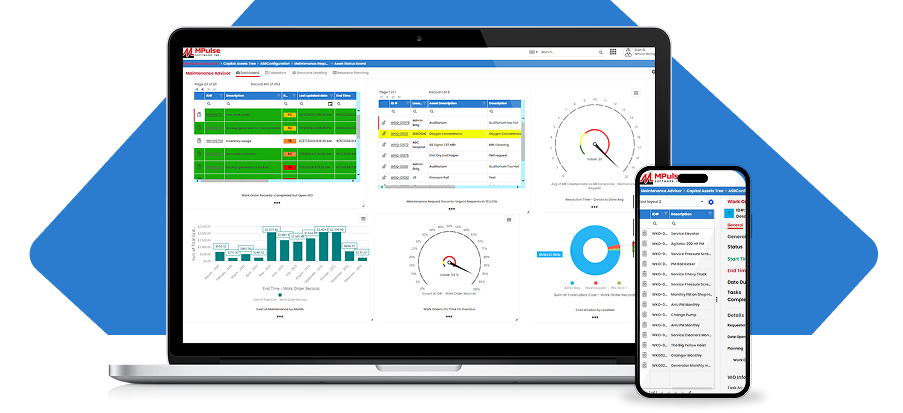Backlogs are stressful. They slow your operations down, make your workers feel overwhelmed, and can lead to much bigger problems.
But there’s a smart way to deal with it: scheduled maintenance.
If you’ve worked on a maintenance team, you’ve probably heard someone say, “We’ll fix it when we get to it.”
Over time, however, these small tasks can pile up. A broken light here, a leaky faucet there, or an HVAC system that’s not working well. These tasks become a backlog and cause more stress.
But scheduled maintenance can actually help shrink your backlog, and maybe even prevent one in the future.
Table of Contents
What Is Scheduled Maintenance?
Scheduled maintenance is when you plan ahead to take care of equipment, machines, or a building before things break. It includes things like:
- Changing air filters every 3 months
- Checking smoke detectors twice a year
- Inspecting HVAC units before summer or winter
- Cleaning drains once a month
In contrast, many teams focus on reactive maintenance, where you wait until something breaks to fix it. Scheduled maintenance keeps things running smoothly and can stop your to-do list from growing out of control.
How Backlogs Get Out of Hand
Backlogs happen for a lot of reasons. Maybe your team is short-staffed. Maybe you don’t have a great system to track tasks. Or maybe you’ve been dealing with emergencies and haven’t had time for smaller jobs.
But here’s the problem: when small tasks sit unfinished, they often turn into big repairs. A loose doorknob becomes a broken door. A dirty air filter causes the air conditioner to stop working. These larger repairs take more time, cost more money, and push everything else further down the list.
How Scheduled Maintenance and CMMS Help Your Backlog
1. It Prevents New Problems from Piling Up
The most effective way to prevent a backlog from growing is to minimize the number of new tasks coming in. Scheduled maintenance does just that. If you regularly check and clean equipment, fewer things break—and you have fewer new work orders coming in.
For example, if you clean roof gutters every fall, you won’t have to deal with flooding or roof damage in the winter. That’s one less emergency to add to your already long list.
2. It Helps You Prioritize
When you use a schedule, you know which tasks are coming and when, so your team can focus on what’s most important. Instead of jumping from one emergency to the next, you can plan and divide the work more evenly.
Some scheduled maintenance tasks can even be done during slow times, like school holidays or weekends, so they don’t interfere with daily operations.
3. It Makes Time Management Easier
A huge backlog can make your team feel like they’re always behind. But when tasks are spread out on a calendar with clear deadlines, the work feels more doable.
Scheduled maintenance breaks big jobs into smaller steps. Instead of trying to fix everything at once, you chip away at the list a little at a time. Over time, you start to see real progress.
4. It Gives You Better Records
CMMS tracks all work orders, equipment, and schedules. Using scheduled maintenance tools in CMMS helps you stay organized and shows you what’s already been done.
When you can see your maintenance history, it’s easier to find repeat problems, plan your budget, and avoid doing the same work twice. That saves time and keeps the backlog from growing.
5. It Improves Communication
A backlog often grows when no one knows who is supposed to do what. Scheduled maintenance and CMMS can clear up miscommunications. Tasks can be assigned ahead of time to the right people. Everyone knows their responsibilities, and there’s less confusion.
Plus, with CMMS, everyone on your team can see what’s planned and what’s still left to do.
6. It Builds a Maintenance Routine
When scheduled maintenance becomes a habit, your team gets into a routine. People start to expect certain tasks and plan for them. They may even catch problems before they’re added to the backlog at all.
Good routines create a culture of responsibility. Workers begin to notice small issues and take care of them before they get worse.
Stop Problems Before They Start
Let’s say your team has 100 open work orders. If you do reactive maintenance only, that number might grow every week. But if you start scheduling regular tasks, like monthly HVAC checks, quarterly plumbing inspections, and bi-weekly filter changes, you’ll stop many problems before they even start.
You’ll also get fewer emergency calls, which gives your team more time to focus on clearing out the old tasks. Over time, the backlog shrinks instead of grows.
Scheduled Maintenance and CMMS Keep Backlogs Under Control
A backlog doesn’t have to be permanent. With smart planning and regular upkeep, you can turn that long list of tasks into a manageable schedule.
Scheduled maintenance and CMMS help stop new problems, reduce emergencies, and make your team’s work easier and more effective. Instead of falling behind, you stay ahead. And that helps everyone.
So don’t wait for things to break. Make a schedule, stick to it, and take control of your building’s maintenance. Get started today. MPulse can help. Contact us.






